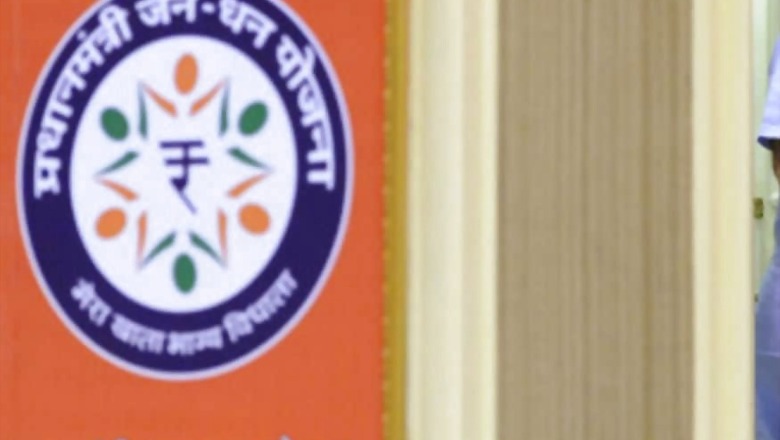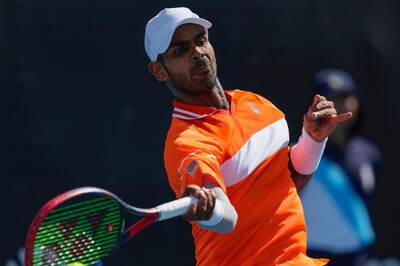
views
In the run-up to Lok Sabha elections when we are all bombarded with opinion, propaganda and heated debates in favour of or against a political party, scientific data attains paramount importance. The use of data gives us an opportunity to discern facts from narratives. And the best parameter to judge the performance of a government is to assess the impact of its public schemes, especially those focused on social welfare.
I would like to share results from a nationally representative survey conducted by the C-Voter Foundation to assess the impact of key public programmes. The survey queried respondents at random across 28 states, with the questionnaire being administered in 10 languages. Since responses were collected through a telephonic survey, a self-selection bias needs to be factored in while examining the results, despite near-universal mobile penetration in India.
Thematic areas covered by the questionnaire included financial inclusion, sanitation, clean fuel, electrification, women empowerment and skill development, among others. In addition, socio-economic data was collected to categorise responses across age, income groups and educational level along with the social category of respondents.
As per the survey, Ujjwala Yojana appears to be the best performing scheme, with 52.4% respondents confirming that they had received free LPG connections.
Moreover, the positive responses were higher among the socially disadvantaged groups. Almost 63.8% members from the Scheduled Castes, 72.9% members from the Scheduled Tribes, and 44.5% of the Muslim community said they had received a free LPG connection through the scheme.
According to government estimates, nearly seven crore LPG connections had been distributed to poor households up to March this year. This number was above the original target of five crore connections. Additionally, 48% of the beneficiaries belonged to the SC/ST communities, which matches the trends suggested by the survey.
The Jan Dhan Yojana (financial inclusion) is the second most popular scheme, with 38% of the respondents saying they had opened an account. Interestingly, respondents aged 25 or below seemed to be the highest benefactors, with almost 41% of them having opened their (first) bank account under this scheme.
As per government figures between 2014 and 2019, nearly 33 crore Jan Dhan bank accounts were opened across India, with 17.61 crore of them in rural and semi-urban areas. This correlates with figures from the World Bank Global Findex report, which said that of the 51.4 crore bank accounts opened from 2014 to 2017, a whopping 55% were from India.
While opening a bank account may be the first step, other schemes aimed at encouraging public savings for girls’ education and dispensing of collateral free loans also appear to have a good uptake, especially amongst women. Close to 23% respondents said they had opened a Sukanya Samridhi account, which provides for higher interest rates on depositing money for girls’ education.
Interestingly, the average coverage for this scheme among Muslims (21%) was not very far from the national average. Similarly, when asked about the Mudra Yojana that aims to provide loans of up to Rs 10 lakh to small entrepreneurs, women respondents seemed to have benefited more.
The other big performer was the Deen Dayal Gram Jyoti Yojana that aims to bring about universalisation of rural electrification. About 32.5% of the respondents said they had received government subsidy and support for electrification in their villages.
In 2014, an energy audit found that 18,452 villages in India were not connected to the power grid. The same year, the NDA government announced that it would aim to electrify 100% of the villages within the first 1,000 days in power. This target was achieved within 988 days, with the last village in Manipur being connected to the grid on April 28, 2018.
The cent percent coverage was lauded by the International Energy Agency in its World Energy Outlook, where it said that “one of the greatest success stories in access to energy in 2018 was India completing the electrification of all of its villages”.
It is also important to highlight that while laying down a grid infrastructure for each village is only the first step, the next should target providing energy to each household. As of January 2019, more than 2.4 crore households had been electrified under the Saubhagya Yojana.
As for Ayushman Bharat and related health insurance benefits, 38% of the respondents said they had not heard about the scheme. At least 46% said they were aware of the scheme but were yet to benefit from it. As of March 2019, although 2.89 crore insurance cards had been issued under this scheme, patient admissions had touched just 18 lakh.
It is important to keep in mind that health-related expenditures are need-based and this scheme was launched last year. This caveat aside, it may be said that awareness about this scheme, including basics of how health insurance works, needs to be spread more effectively among the target population.
Finally, despite the impetus on Skill India, only 14% respondents seemed to have benefited from the scheme while 40% had not even heard about it or its benefits. Similarly, nearly 64% of the respondents from low-income groups had not heard about the Startup India Scheme and less than 15% had received financial aid to start their businesses (if they did not already qualify for smaller loans under the Mudra Yojana).
In addition to administering a questionnaire on specific welfare schemes, respondents were also asked to rate not just the overall satisfaction with the objectives of a campaign but also their performance in light of effective implementation. The best performing campaigns were Beti Bachao Beti Padhao and Swachh Bharat Abhiyan, with more than 80% respondents expressing satisfaction with the overall objective of both campaigns and 45.5% and 42% satisfied with its implementation, respectively.
Interestingly, the Beti Bachao Beti Padhao campaign was a big hit among respondents from lower-income groups and those under the age of 25. In the case of the Swachh Bharat Abhiyan, women respondents were more satisfied with the results.
The Digital India and Smart City campaigns recorded moderate responses, with 37.5% and 32%, respectively, satisfied with their implementation. While 42% of the respondents thought that the much-touted Make in India campaign was good in principle, more efforts were needed to improve its implementation on ground.
Conclusively, the results indicate that public welfare schemes aimed at financial inclusion (Jan Dhan), clean fuel (Ujjwala Yojana), rural electrification (Gram Jyoti), sanitation (Swachh Bharat) and women empowerment seemed to have done well on the implementation front. And if we stratify respondents based on social categories, the positive response rate from members of the SC/ST/OBC communities was higher on average than the proportion of their national population. While underwhelming responses were recorded from schemes such as Make in India, Skill India, and StartUp Scheme.
For the current government seeking a pro-incumbency vote on the basis of its “vikas” (development) agenda, it will be interesting to observe the degree to which the impact of these welfare schemes is translated into determinants for voting behaviour. If that happens, India can set the stage for a big change from caste and communal politics to a development- and performance-driven voting agenda.
(The author holds a Masters degree in Global Health from Harvard University and writes on health and policy. Views are personal.)

















Comments
0 comment